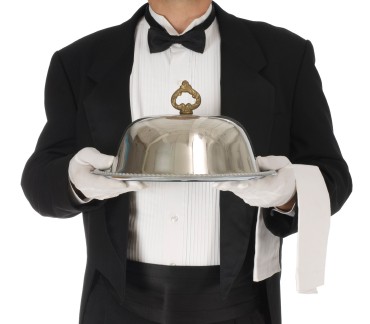Catering to one side
 I took a couple of weeks off from writing about the mainstream media's overt advocacy for same-sex marriage in California. I was hoping that we'd see a bit more balance in the coverage. Alas, no. I don't think journalists are even trying. Take, for instance, this Washington Post story from Ashley Surdin. Here's her angle:
I took a couple of weeks off from writing about the mainstream media's overt advocacy for same-sex marriage in California. I was hoping that we'd see a bit more balance in the coverage. Alas, no. I don't think journalists are even trying. Take, for instance, this Washington Post story from Ashley Surdin. Here's her angle:
LOS ANGELES -- Two things are certain in California's mounting legal showdown over same-sex marriage: Gay couples will wed this month, and, come November, voters will decide whether the state's constitution should exclude them from such unions.
If the vote is yes, the only certainty will be confusion.
The story goes on to catalogue the various and sundry ways that chaos and confusion would ensue if horrible meanies had their way in passing an amendment to the state constitution defining marriage as a union between one man and one woman.
The angle is perfectly valid. But what blew me away was the lack of perspective from advocates of traditional marriage. The angle seems well-suited to include their perspective, something the mainstream media have struggled with in recent weeks. I've paid enough attention to know that traditional marriage advocates oppose legalizing same-sex marriage by judicial fiat in part because of the havoc it wreaks on social and legal institutions. An article about the havoc wreaked by two potentially contradictory decisions -- one from a court and one from the will of the people -- would be a great way to explore that traditional position. The article doesn't include that perspective. It does, however, end with this hard-hitting, totally unbiased walk-off quote:
But Ryan James, 32, and Moe Perez, 39, of Oakland said they are going ahead with their wedding and are too harried planning for their August ceremony to worry about what might happen afterward. Said Perez: "We're more concerned about trying to find a caterer."
Ba-dum-dum! That's how I'd end a press release from a same-sex marriage advocacy group. That's not how I'd end a supposedly fair story in the Washington Post.
There's another thing I've noticed in stories about support and opposition to same-sex marriage in California, as evidenced by this paragraph from the story:
Recent polls indicate that voters could go either way on the measure. One, by the Los Angeles Times and TV station KTLA, found that 54 percent of voters support the proposed amendment. Not long after, a Field Poll found that 51 percent approve of the idea of allowing same-sex couples to marry.
One of the many ways in which reporters were not critical of the Field poll dealt with the survey method. And we're seeing more and more reporters cite it, uncritically, as evidence of a huge 18-point shift in opinion over a few days in California.
 One of our readers here, who is either really named Perpetua of Carthage or goes by that name, suggested a possible reason for the discrepancy between the Los Angeles Times/KTLA poll and the Field Poll:
One of our readers here, who is either really named Perpetua of Carthage or goes by that name, suggested a possible reason for the discrepancy between the Los Angeles Times/KTLA poll and the Field Poll:
The question reporters should be asking is: Why did the two polls, the LA Times Poll and the Field Poll, conducted at the same time and among the same survey population, provide such different results?
News reporters should be taking the poll questions and results to professors in the field of survey research. I think they will find the answer is in the new Field Poll design.
As she explains on her site, two polls taken in the same time period from the same population show strikingly different results. She thinks it has something to do with the way the questions were asked. In the Times poll, before Californians were asked whether they would vote for the marriage amendment, they were asked whether they supported marriage, civil unions or neither for same-sex couples. The Field Poll only asked the question about whether Californians would vote for a Constitutional amendment to prohibit same-sex couples from marrying. The Field Poll showed a dramatic switch from the last time the question was asked in 2006. In that poll, they followed the same format as the Los Angeles Times poll by asking about domestic partnerships.
Perhaps some enterprising reporter will write something about the Spiral Effect, the historic underreporting of opposition to same-sex marriage and how public opinion polls show dramatically different results based on how questions are asked. But somehow I doubt it.